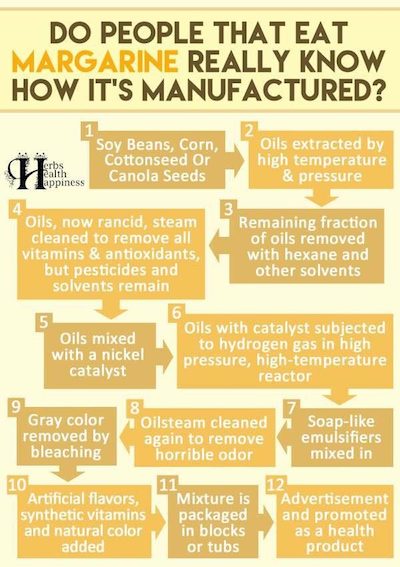Fats and oils
We get fats from a wide range of natural sources, like dairy, egg yolks, beef dripping, lard, coconut, avocado, olives and many varieties of nut and seed oils.
We simply cannot live, or function without eating fat. Fats (known as lipids) insulate us and protect our organs from trauma; they form our cell membranes (the semi-permeable layer that surrounds each and every cell); and they circulate in the blood, bringing energy to our cells and providing 60% of our energy when we’re resting (if we are metabolically healthy).
Fats provide the cholesterol which helps to manufacture and balance our hormones and helps to transport fat-soluble vitamins A, D, E and K around our body to reach our cells.
Fats also provide important omega-3 and omega-6 fatty acids, which we aren’t able to make ourselves, helping to protect our vision, nervous system and their balance is important to manage and reduce inflammation.
In food, fats give us flavour, aroma and they slow down the digestion of other nutrients, helping to stabilise our blood sugar and keeping us feeling fuller for longer.
Fats – are they friend or foe?
We’ve all heard the terms ‘good’ fats and ‘bad’ fats. For decades, conventional dietary wisdom has demonised traditional saturated fats (butter, cream, egg yolks, beef dripping and coconut oil) on the basis that these are ‘bad’ fats are not good for our hearts or our waistlines.
Instead, we’ve been encouraged to eat polyunsaturated fats like margarine, spreads and vegetable and seed oils, on the basis that these ‘good’ fats are healthier for our hearts.
However, most foods are made up of some combination of saturated, monounsaturated and polyunsaturated fatty acids.
Polyunsaturated fats (PUFAs) are liquid fats – vegetable oil, sunflower oil, nut oils and seed oils. These fats have been strongly promoted as heart-healthy.
However, some authorities have always argued that these PUFAs are in fact very harmful to our health and should be reduced or avoided. Food-derived polyunsaturated fatty acids (PUFAs) play an important role in the development of problems associated with aging – reduced immunity, insomnia, decreased learning ability, substitution of fat for muscle, susceptibility to tissue peroxidation and inflammation, growth of tumours, etc., and are probably involved in most other health problems, even in children.
The negative impact of excess and imbalanced PUFAs on the body is wide-ranging; they decrease the ability of the cell to produce energy and, as well as promoting ageing, they negatively impact thyroid function, interfere with digestive enzymes and are strongly implicated in the development of diabetes.
The molecular structure of PUFAs is unstable and these oils rapidly oxidise (think rust) and go rancid and toxic on exposure to light and heat (even at very low temperatures), promoting the development of free radicals in the body, triggering inflammation and accelerating the ageing process.
While many of us have been using vegetable and sunflower oils, nut oils (and more recently rapeseed oil) for cooking for many years, the unstable properties of these fats actually make them very unsuitable for cooking.
Many of the chronic, degenerative problems that plague us today can be traced back to our modern Western diet with its very high and pro-inflammatory PUFA content, and indeed, many authorities now explicitly caution against their use for cooking.
Rapeseed oil – is it healthy?
Rapeseed oil has gained popularity and, on the face of it, looks to tick all the health boxes: a predominantly a monounsaturated fat, with a balanced pro and anti-inflammatory profile.
However, the devil is in the detail: to extract the oil, the rapeseeds need to undergo very harsh chemical treatment with the solvent hexane (made from crude oil) in a process which removes the toxic, bitter euric acid and produces the oil we see on supermarket shelves. Pure n-Hexane has an unpleasant odour, is highly flammable and its vapours can be explosive.
The major use of hexane is to extract vegetable oils from crops like rapeseed. Rapeseed oil is now everywhere in every kind of processed food and animal feeds and is frequently used to make butter ‘spreadable’. Witnessing the process of how this so called ‘healthy’ oil is made (search online) should be enough to put you off it for life.
How to buy and store fats and oils
Saturated fats can be safely stored on the kitchen worktop; however, you might prefer to store them in the fridge.
If you do choose to consume PUFAs, consider using them unheated, very sparingly and for dressings only. Always buy them in small batches and check the date.
Oils should always be traditionally cold-pressed and then left in their natural, unrefined state and stored in dark glass bottles, away from light sources. If they’re expeller-pressed (extracted under friction and pressure) the heat created during processing damages the fragile oils. Exposure to light compounds this damage and, in consequence, damages your health.
Is fat your friend?
If you’re confused and worried about fats, you’re not alone and health experts disagree on ‘good’ and ‘bad fats’. Whether fat is your friend or not depends on the type of fat, how you use it, the current state of your health and the amount you consume. What is for sure is that our bodies do far better with traditional, unprocessed healthy fats.
References
- Weston A Price Foundation: Know Your Fats
- Izabella Natrins (2020). The Real Food Solution. Better Living Press
Cooking with Fats and Oils
This subject has been thoroughly explored in this blog by Michael Joseph 25 Types of Cooking Fats and Oils: Nutrition Facts, Benefits, Drawbacks October 25, 2018
Here are our top health choices:
- Extra-virgin olive oil
- Pastured lard, beef tallow or suet (rendered beef fat)
- Coconut oil
- Butter or ghee
Which fat to choose?
Fat plays a number of roles in our kitchens: we can use it as main ingredient, as a cooking medium and for seasoning food. Samin Nosrat (a top American chef and author of Salt Fat Acid Heat) explains it like this:
As a main ingredient, fat will significantly affect a dish. Often, it’s both a source of rich flavor and of a particular desired texture. For example, fat ground into a burger will render as it cooks, basting the meat from within and contributing to juiciness. Butter inhibits the proteins in flour from developing, yielding tender and flaky textures in a pastry. Olive oil contributes both a light, grassy flavour and a rich texture to pesto. The amount of cream and egg yolks in an ice cream determine just how smooth and decadent it’ll be (hint: the more cream and eggs, the creamier the result!).
The role fat plays as a cooking medium is perhaps its most impressive and unique. Cooking fats can be heated to extreme temperatures, allowing the surface temperature of foods cooked in them to climb to astonishing heights as well. In the process, these foods become golden brown and develop the crisp crusts that so please our palates. Any fat you heat to cook food can be described as a medium.
Certain fats can also be used as seasoning to adjust flavor or enrich the texture of a dish just before serving: a few drops of toasted sesame oil will deepen the flavors in a bowl of rice, a dollop of sour cream will offer silky richness to a cup of soup, a little mayonnaise spread on a BLT will increase its succulence, and a smear of cultured butter on a piece of crusty bread will add untold richness
To determine which role fat is playing in a dish, ask yourself these questions:
- Will this fat bind various ingredients together? If so, this is a main ingredient.
- Does this fat play a textural role? For flaky, creamy, and light textures, fat plays the role of main ingredient, while for crisp textures, it’s a cooking medium. For tender textures, fat can play either role.
- Will this fat be heated and used to cook the food? If so, this is a cooking medium.
- Does this fat play a flavor role? If it’s added at the outset, it’s a main ingredient. If it’s used to adjust flavor or texture at the end of cooking the dish as a garnish, it’s a seasoning.
Once you’ve identified which role fat will play in a dish, you’ll be better equipped to choose which fat to use, and how to cook food that will result in the taste and texture you’re after.
So our recommendation is to balance a healthy choice with what you want to achieve in your dish… and then simply to enjoy it!!
Research Articles
- Saturated Fats and Health: A Reassessment and Proposal for Food-based Recommendations: JACC State-of -the-Art Review, June 2020
- Associations of fats and carbohydrate intake with cardiovascular disease and mortality in 18 countries from five continents (PURE): a prospective cohort study Lancet, Aug 2017
-
“High carbohydrate intake was associated with higher risk of total mortality, whereas total fat and individual types of fat were related to lower total mortality. Total fat and types of fat were not associated with cardiovascular disease, myocardial infarction, or cardiovascular disease mortality, whereas saturated fat had an inverse association with stroke. Global dietary guidelines should be reconsidered in light of these findings.”
- Evaluation of Chemical and Physical Changes in Different Commercial Oils during Heating Acta Scientific Nutritional Health June 2018



